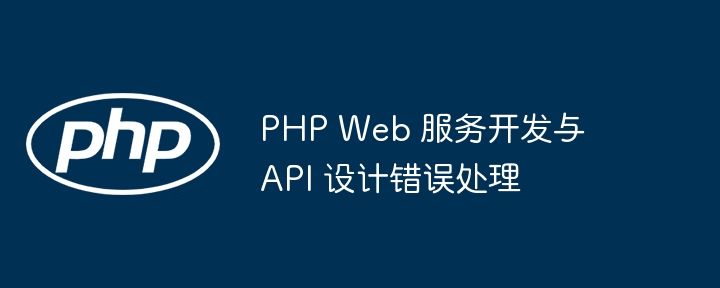
Error handling in PHP web services development involves the use of try-catch blocks, error constants, and custom error handlers. In API design, best practices include using HTTP status codes, defining JSON error responses, providing friendly error messages, and using custom error handling middleware to handle errors consistently, for example: Using custom error handling middleware to catch exceptions and returns a JSON response including error code and message.

Error handling and API design in PHP Web service development
Introduction
In PHP web service development, error handling is crucial to ensure the stability and maintainability of the application. API design also involves handling and returning errors to improve the client experience. This article will explore error handling techniques in PHP and how to apply them to API design.
Error handling techniques in PHP
PHP provides the following error handling mechanisms:
Error handling practical case
Consider the following PHP code:
try {
// 执行代码可能会抛出异常
} catch (Exception $e) {
// 在这里处理异常
echo $e->getMessage();
}This code block uses a try-catch block to handle any errors that may occur during Exceptions thrown when executing code. If an exception occurs, it catches the exception information and prints it.
Best Practices in API Error Handling
Practical Code Example
The following code snippet shows how to use custom error handling middleware to handle API errors:
<?php
use Slim\Slim;
use Slim\Middleware\ErrorMiddleware;
$app = new Slim();
// 创建自定义的错误处理中间件
$errorMiddleware = function (Request $request, Response $response, $next) {
try {
// 调用下一个中间件
$response = $next($request, $response);
} catch (Exception $e) {
// 在这里处理错误
$response = $response->withStatus(500)
->withJson(array(
'error' => $e->getMessage()
));
}
return $response;
};
// 将中间件添加到应用程序
$app->add($errorMiddleware);In the above example, the error handling middleware will catch any exception thrown in the application and return a JSON response with the error code and message.
The above is the detailed content of PHP Web service development and API design error handling. For more information, please follow other related articles on the PHP Chinese website!